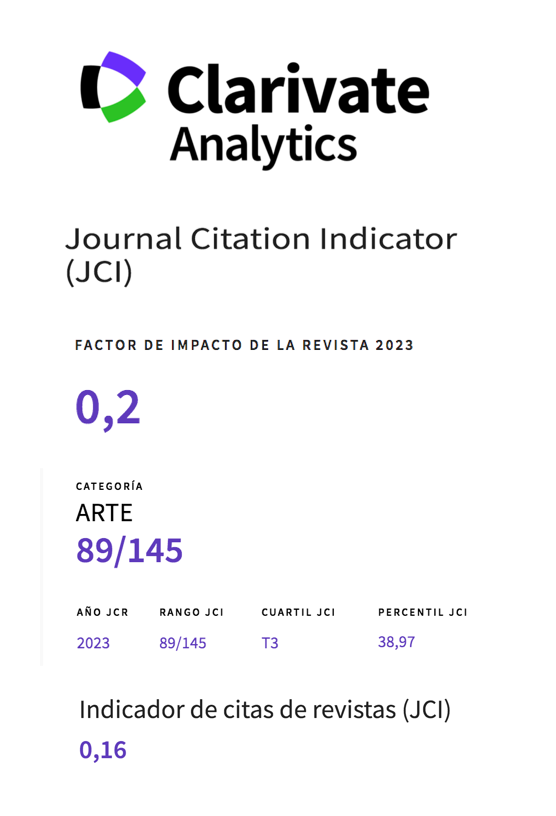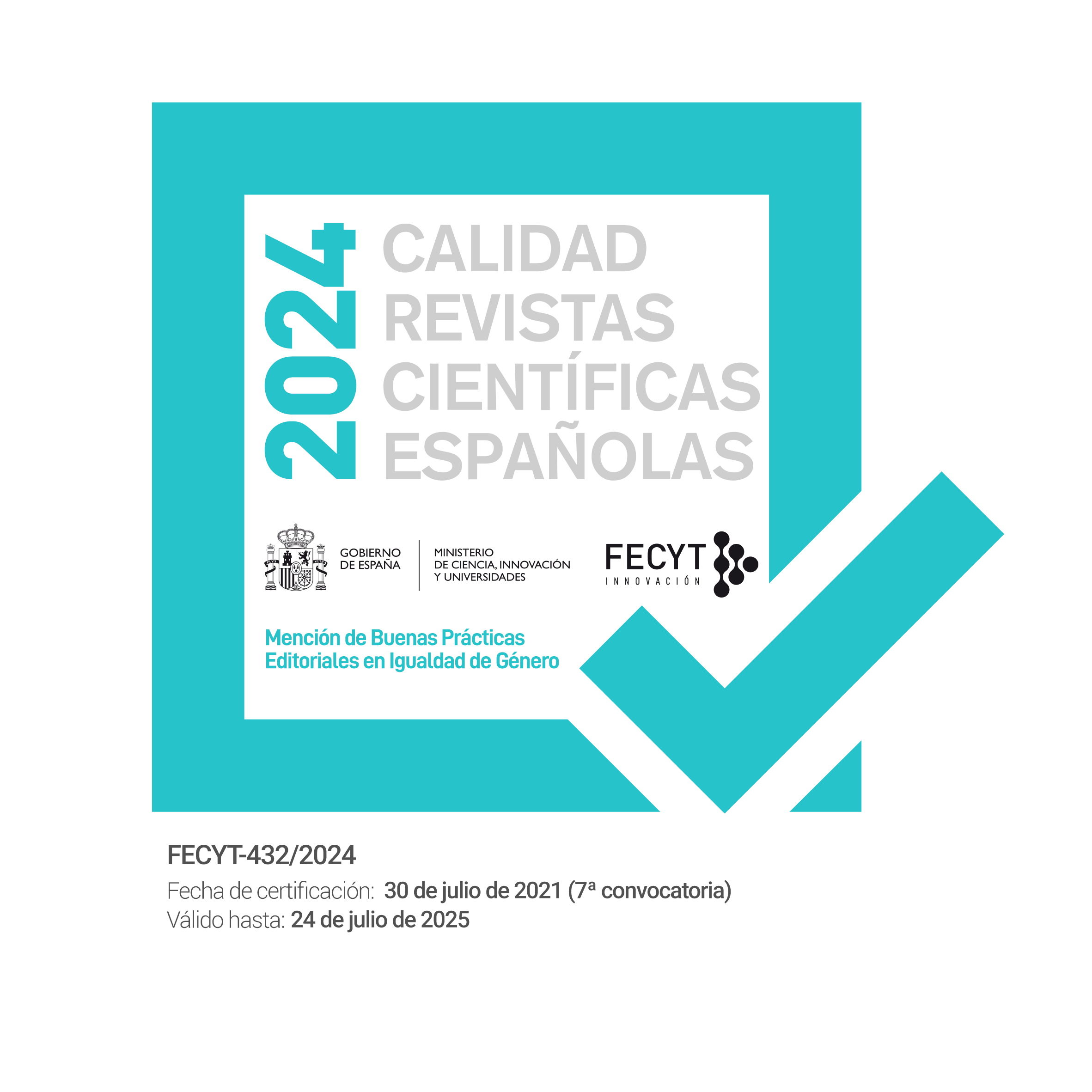Prácticas culturales colaborativas y sociabilidad débil. Una caracterización a partir de experiencias autogestivas en Tijuana y Monterrey, México
Resumen
Si bien la investigación sobre prácticas y proyectos artísticos colaborativos suele enfatizar los lazos sociales e, incluso, la producción de comunidad que estos generan, es frecuente que no se atienda a la singularidad de las formas de sociabilidad que ahí se articulan. Este artículo propone un doble ejercicio, de definición teórica y de aplicación analítica, a partir del trabajo empírico realizado en las ciudades mexicanas de Tijuana y Monterrey. En nuestro análisis proponemos la noción de “sociabilidad débil” para nombrar los modos de relación producidos por agentes culturales de la sociedad civil en espacios o proyectos independientes. Sostenemos, así, que la sociabilidad que producen estas estrategias es conflictiva, efímera, espacialmente delimitada y afectiva. Tanto nuestra postura teórica como los hallazgos de nuestro trabajo de campo nos llevarán a concluir que las relaciones gestadas en estos microespacios –donde el conflicto es productivo, lo efímero predispone a la negociación y el afecto es cuidado– operan como un proceso imprescindible para la politización de las prácticas artísticas colaborativas en la ciudad neoliberal.
Descargas
-
Resumen512
-
pdf531
Citas
Ataç, I., Rygiel, K. y Stierl, M. (2021). Building Transversal Solidarities in European Cities: Open Harbours, Safe Communities, Home. Critical Sociology, 47(6), doi: https://doi.org/10.1177/0896920520980522
Blanco, Paloma (2005). Prácticas artísticas colaborativas en la España de los años noventa. En Desacuerdos 2. Sobre arte, políticas y esfera pública en el Estado español. España: Arteleku-Diputación Foral de Gipuzkoa, Museu d'Art Contemporani de Barcelona y UNIA arteypensamiento.
Borén, T. y Young, C. (2016). Artists and creative city policy: Resistance, the mundane and engagement in Stockholm, Sweden. City, Culture and Society, 8, 21-26.
Bookman, S. (2013). Brands and Urban Life: Specialty Coffee, Consumers, and the Co-creation of Urban Café Sociality. Space and Culture, 17(1), 85-99.
Brighenti, A. M. (2013). Urban Interstices: The Aesthetics and the Politics of the In-between. Farnham, Inglaterra: Ashgate.
Caldeira, T. (2017). Peripheral urbanization: Autoconstruction, transversal logics, and politics in cities of the global south. Environment and Planning D: Society and Space, 35(1), 3-20.
Campos-Delgado, A. E. y Hernández-Hernández, A. (2015). Vivir en la frontera. Una mirada a las prácticas socioculturales en la región Tijuana-San Diego. En A. Hernández-Hernández y A. E. Campos-Delgado (Coords.), Líneas, límites y colindancias. Mirada a las fronteras desde América Latina. Ciudad de México, México: CIESAS y COLEF.
Carrillo, J. (2018). Space invaders. Intervenciones artístico-políticas en un territorio en disputa: Lavapiés (1997-2004). Madrid, España: Brumaria.
Checa-Artasu, M. (2011). Gentrificación y cultura: algunas reflexiones. Biblio 3W. Revista bibliográfica de geografía y ciencias sociales, XVI (914).
Dekel, T., Meir, A. y Alfasi, N. (2019) Formalizing infrastructures, civic networks and production of space: Bedouin informal settlements in Be'er-Sheva metropolis. Land Use Policy, 81, 91-99.
Delgadillo, V., Díaz, I. y Salinas, L. (Coords). (2015). Perspectivas del estudio de la gentrificación en México y América Latina. Ciudad de México, México: UNAM.
Duff, C. (2010). On the role of affect and practice in the production of place. Environment and Planning D: Society and Space, 28(5), 881-895.
García-Canclini, N. (1995). Mexico: cultural globalization in a disintegrating city. American Ethnologist, 22(4), 743-755.
García-Canclini, N. (1998). ¿Ciudades multiculturales o ciudades segregadas? Debate Feminista, 17, 3-19.
García Díaz, L. (2018). Precarity as a common foundation for ‘Networks of Subsistence’. Arte y políticas de identidad, 19, 165-180.
Garza, F., Roca, E. y Villares M. (2020). Cultura local y regeneración urbana: un caso de estudio en Monterrey, Nuevo León. Estudios demográficos y urbanos, 35(3), 761-801.
Garza, F., Ramírez-Agudelo, N. A., Roca, E. y Villares, M. (2021). La cultura como estrategia de regeneración urbana en Monterrey, México. Documents d'anàlisi geogràfica, 67(1), 103-132.
Giglia, A. (2001). Sociabilidad y megaciudades. Estudios sociológicos, XIX (57), 799-820.
Granovetter, M. S. (1973). The Strength of Weak Ties. American Journal of Sociology, 78(6), 1360- 1380.
Grodach, C. (2009). Art spaces, public space, and the link to community development. Community Development Journal, 45(4), 474-493.
Hawkins, H. (2012). Geography and art. An expanding field: Site, the body and practice. Progress in Human Geography, 37(1), 52-71.
Hemmings, C. (2005). Invoking Affect. Cultural theory and the ontological turn. Cultural Studies, 19(5), 548-567.
Hernández, A., Ismael-Simental, E. y Kurjenoja, A. (Ed.). (2018). Ciudad, capital, cultura, Ciudad de México, México: Editorial Ítaca.
Iglesias-Prieto, N. (2014). Tijuana provocadora. Transfronteridad y procesos creativos. En J. M. Valenzuela-Arce (Coord.), Transfronteras. Fronteras del mundo y procesos culturales. Ciudad de México, México: COLEF.
Ismael, E. Kurjenoja, A, Rodríguez Medina, L. y López Cuenca, A. (2019) Building the City through Culture: Puebla’s cultural urban Assemblage (1987-2017).Social & Cultural Geography. DOI: https://doi.org/10.1080/14649365.2019.1698759
Jacobs, J. (1998). Staging difference: aestheticization and the politics of difference in contemporary cities. En R. Fincher y M. Jacobs. (Eds.), Cities of Difference (252-278). Nueva York, Estados Unidos: Guilford.
Janoschka, M. (2016). Gentrificación, desplazamiento, desposesión: procesos urbanos claves en América Latina. Revista INVI, 31(88), 27-71.
Janoschka, M., Sequera J. y Salinas, L. (2014). Gentrificación en España y América Latina. Un diálogo crítico. Revista de Geografía Norte Grande, (58), 7-40.
Jovchelovitch, S. y Priego-Hernández, J. (2013). Underground Sociabilities. Identity, culture and resistance in Rio de Janeiro’s favelas. Brasilia, Brasil: UNESCO.
Jurado, M. A. y Moreno, R. (2018). Expresiones del proceso de gentrificación en el centro de Monterrey. Trayectorias: revista de ciencias sociales de la Universidad Nacional de Nuevo León, (47), 54-76.
Kathiravelu, L. y Bunnell, T. (2018). Introduction: Urban friendship networks: Affective negotiations and potentialities of care. Urban Studies, 55(3), 491-504.
Lobo, M. (2018). Re-framing the creative city: Fragile friendships and affective art spaces in Darwin, Australia. Urban Studies, 55(3), 623-638.
Long, N. J. y Moore, H. L. (Eds). (2013). Sociality. New Directions. New York and London: Berghahn Books.
Low, S. (2017). Spatializing Culture. The Ethnography of Space and Place. Londres y Nueva York: Routledge.
Mayblin, L., Valentine, G., Kossak, F. y Schneider, T. (2015). Experimenting with spaces of encounter: Creative interventions to develop meaningful contact. Geoforum, 63, 67-80.
Mbaye, J. y Dinardi, C. (2019). Ins and outs of the cultural polis: Informality, culture and governance in the global South. Urban Studies, 56(3), 578-593.
Méndez-Llopis, C. (Coord.). (2015). La Otra Ciudad. Recorridos de una Gráfica Disidente. Ciudad Juárez, México: UACJ.
Middleton, J. (2018). The socialities of everyday urban walking and the “right to the city”. Urban Studies, 55(2), 296-315.
Miller, T. y Yúdice, G. (2002). Cultural Policy. Londres, Inglaterra: Sage.
Moreno, R. y Jurado, M. A. (2017). El proceso de renovación urbana en el centro metropolitano de Monterrey. Artistas y activistas: habitar el centro como una forma de resistencia social. En J. Calderón y S. Aguiar (Coords.), Segregación socio-espacial en las ciudades latinoamericanas (pp. 295-315), Buenos Aires, Argentina: Editorial Teseo.
Munro, I. y Jordan, S. (2013). ‘Living Space’ at the Edinburgh Festival Fringe: Spatial tactics and the politics of smooth space. Human Relations, 66(11), 1497-1525.
Müller, A-L. (2019). Voices in the city. On the role of arts, artists and urban space for a just city. Cities, 91, 49-57.
Parker, S. (2004). Urban Theory and the Urban Experience. Encountering the city. Londres, Inglaterra: Routledge.
Pile, S. (2010). Emotions and affect in recent human geography. Transactions of the Institute of British Geographers, 35(1), 5-20.
Ramírez Pedrajo, E. (2009). El triunfo de la cultura. Uso político y económico de la cultura en Monterrey. Monterrey, México: Fondo Editorial de Nuevo León.
Ramírez Pedrajo, E. (2021). El Cuauhtémoc de Troya. Uso y resignificación del espacio público en Monterrey. Monterrey, México: Universidad Autónoma de Nuevo León-CEIIDA.
Shaw, K. (2005). The Place of Alternative Culture and the Politics of its Protection in Berlin, Amsterdam and Melbourne. Planning Theory & Practice, 6(2), 149-169.
Tonkiss, F. (2013). Austerity urbanism and the makeshift city. City, 17(3), 312-324.
Turrini, M. y Chicchi, F. (2013). Precarious subjectivities are not for sale: the loss of the measurability of labour for performing arts workers. Global Discourse, 3(3/4), 507-521.
Vallance, S., Dupuis, A., Thorns, D. y Edwards, S. (2017). Temporary use and the onto-politics of ‘public’ space. Cities, 70, 83-90.
Watson, S. (2009). The Magic of the Marketplace: Sociality in a Neglected Public Space. Urban Studies, 46(8), 1577-1591.
Yúdice, G. (2002). El recurso de la cultura. Usos de la cultura en la era global, Barcelona, España: Gedisa.
Works published in this journal are subject to the following terms:
- The Service of Publications from the University of Murcia (publishing house) keeps the published works’ copyrights, and favors and allows the reuse of these works under the license indicated in point 2.
- Works are published in the journal’s online edition under the license Creative Commons Reconocimiento-NoComercial-SinObraDerivada 3.0 España(texto legal). They can be copied, used, disseminated, transmitted and publicly exhibited, as long as: i) the author and original source of publication are cited (journal, publishing house and work’s URL); ii) they are not used for commercial purposes; iii) the existence and specifications of this license are mentioned.
3. Conditions for auto-file. It is allowed and encouraged that authors share electronically their pre-print version (the pre-reviewed version) and /or post-print version (the reviewed and accepted version) of their Works before the publication, since it promotes its circulation and dissemination. RoMEO color: green.










